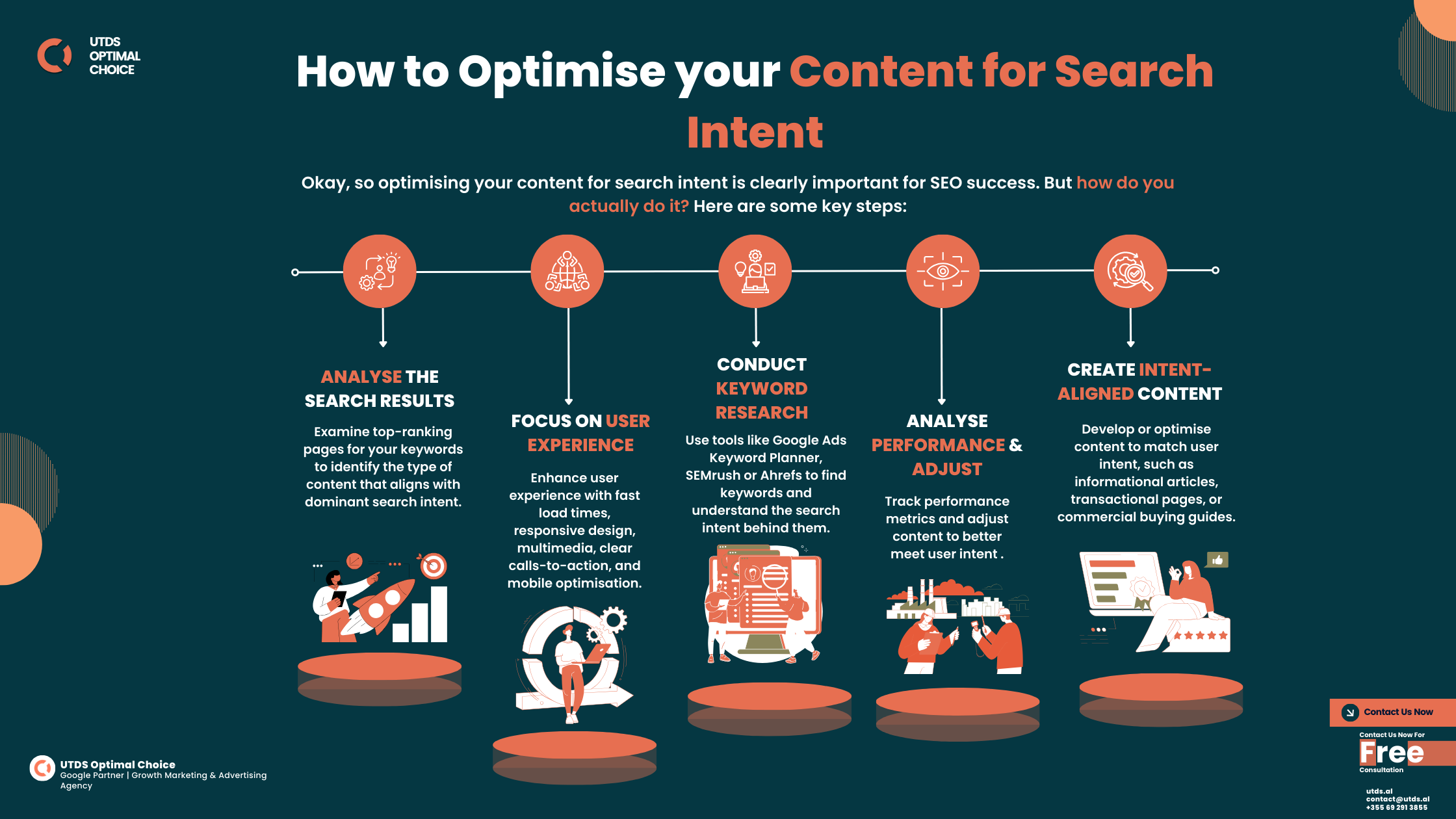Unveiling the Secrets of Ghosted Domains
Explore the intriguing world of expired domains and online opportunities.
Search Intent Secrets Revealed
Unlock the hidden secrets of search intent and skyrocket your traffic! Discover what users really want and master online visibility today!
Understanding the Different Types of Search Intent: A Comprehensive Guide
Understanding the different types of search intent is crucial for optimizing your content and improving your website's visibility on search engines. Search intent refers to the reason behind a user's query and can generally be categorized into four main types: informational, navigational, transactional, and commercial investigation. Informational intent indicates that the user is seeking knowledge or answers to specific questions, such as 'What is SEO?' Navigational intent reveals that the user is looking for a particular website or webpage, such as 'Facebook login.' Meanwhile, transactional intent occurs when a user intends to make a purchase, for example, 'buy running shoes online.'
Another significant type is commercial investigation, where users are in the research phase, assessing products or services before making a decision. They might use queries like 'best smartphones 2023' or 'top 10 laptops for gaming.' Understanding these categories can help content creators tailor their strategies to meet user needs effectively. To optimize your SEO efforts, it’s essential to align your content with the identified search intent. By doing so, you can not only enhance user experience but also increase your chances of ranking higher in search engine results pages (SERPs).

How to Optimize Your Content for User Intent: Tips and Best Practices
Understanding user intent is crucial for creating content that resonates with your audience. User intent refers to the reason behind a user's search query—whether they are looking to purchase a product, seek information, or find a solution to a problem. To optimize your content, start by conducting thorough keyword research to identify not only the keywords people are using but also their underlying motivations. This will help you categorize your content into different types, such as informational, navigational, transactional, and commercial investigation. Aligning your content with the appropriate intent can significantly enhance user engagement and improve your search rankings.
Once you've established a clear understanding of user intent, implement best practices to enhance your content further. Create high-quality, relevant content that answers the specific questions users are asking. Utilize header tags (H1, H2, H3) to structure your information clearly, which aids both user experience and search engine crawling. Incorporate visual elements like images and videos, as they can enhance user engagement and make your content more digestible. Regularly review and update your content to ensure it remains relevant and aligns with changes in user search behavior. By focusing on user intent and consistently optimizing your content, you’ll foster a stronger connection with your audience while boosting your SEO efforts.
What is Search Intent and Why is It Crucial for Your SEO Strategy?
Search intent, also known as user intent, refers to the underlying goal that a user has when entering a query into a search engine. Understanding this intent is crucial for crafting effective content that resonates with your audience. There are primarily four types of search intent: informational (seeking knowledge), navigational (looking for a specific website), transactional (ready to make a purchase), and commercial investigation (researching products before buying). By aligning your content with the user's intent, you enhance the chances of fulfilling their needs, which can lead to better engagement and higher rankings in search engine results.
Integrating search intent into your SEO strategy is essential for several reasons. Firstly, it helps in improving the relevance and quality of your content, ensuring that it meets the expectations of your target audience. Secondly, it enhances the user experience, as visitors are more likely to find what they are looking for, leading to lower bounce rates and longer session durations. Lastly, understanding search intent allows you to optimize your keywords more effectively, catering to specific audience needs and behaviors. In a competitive digital landscape, prioritizing search intent can be the difference between a successful SEO campaign and one that falls flat.